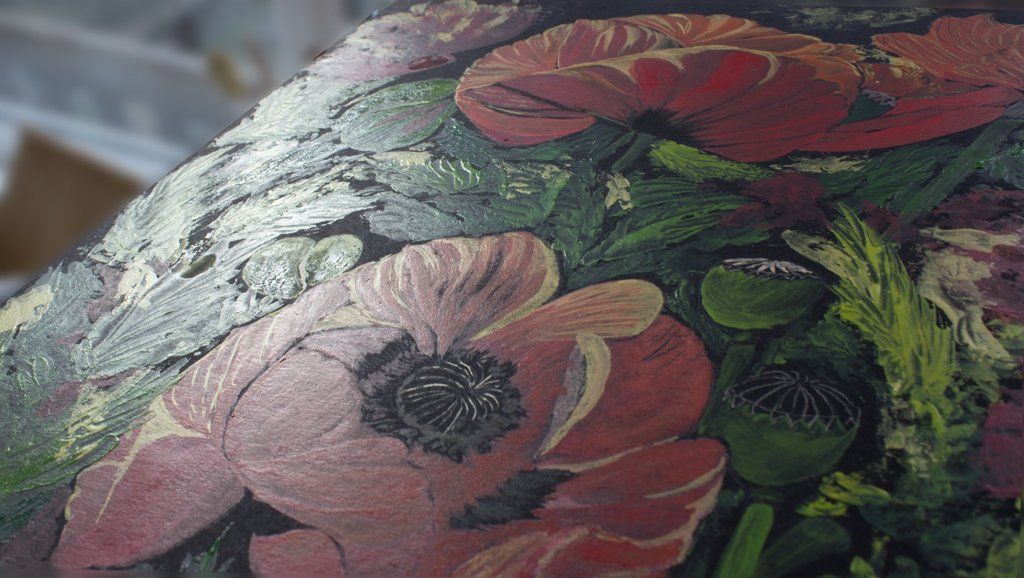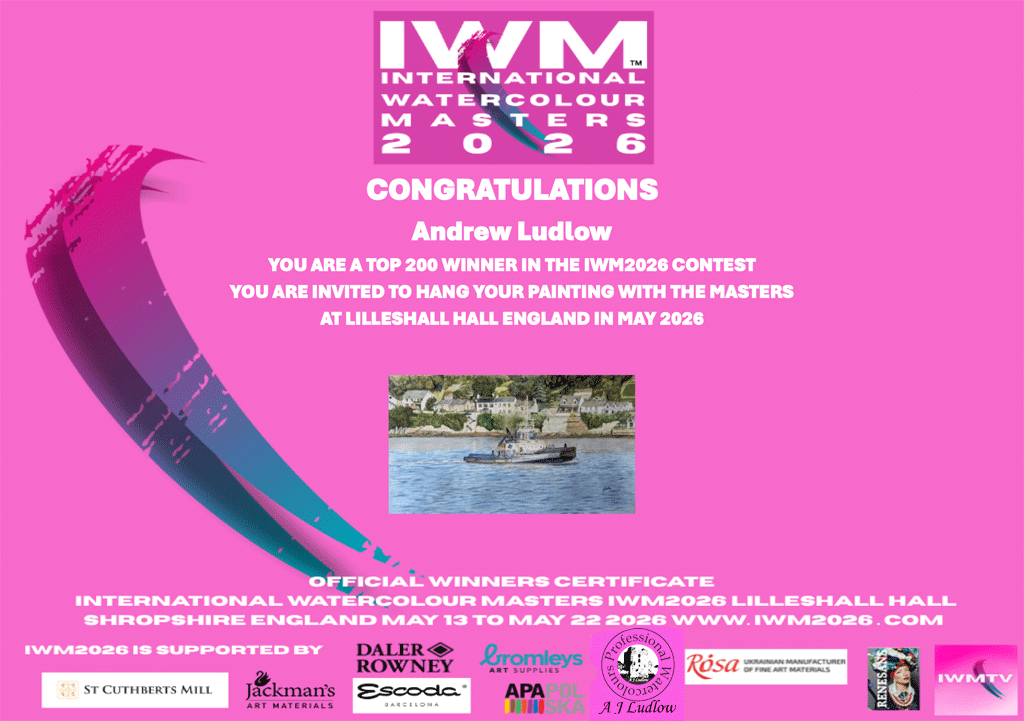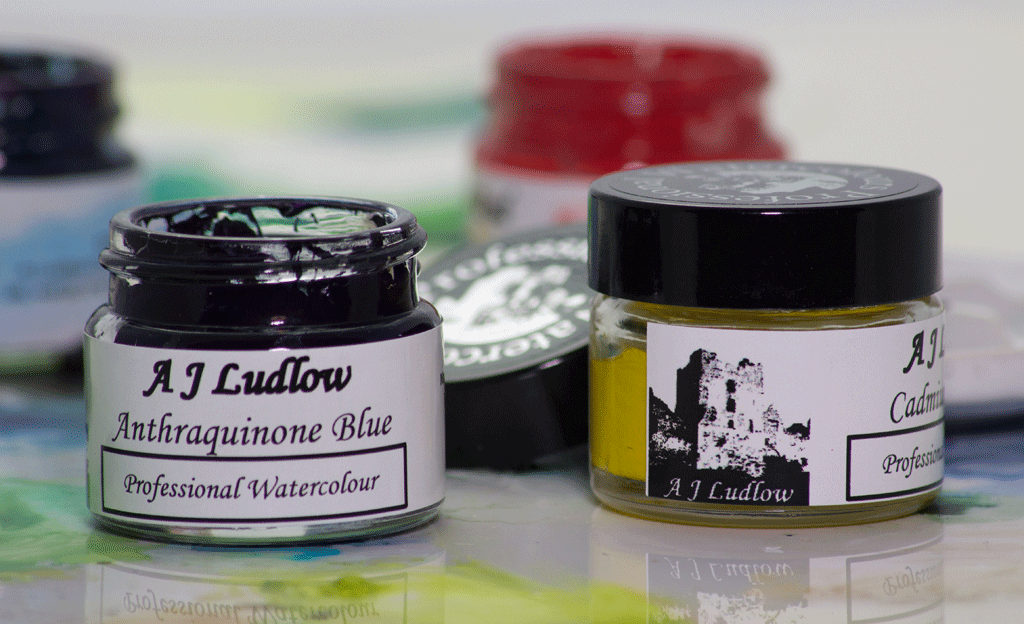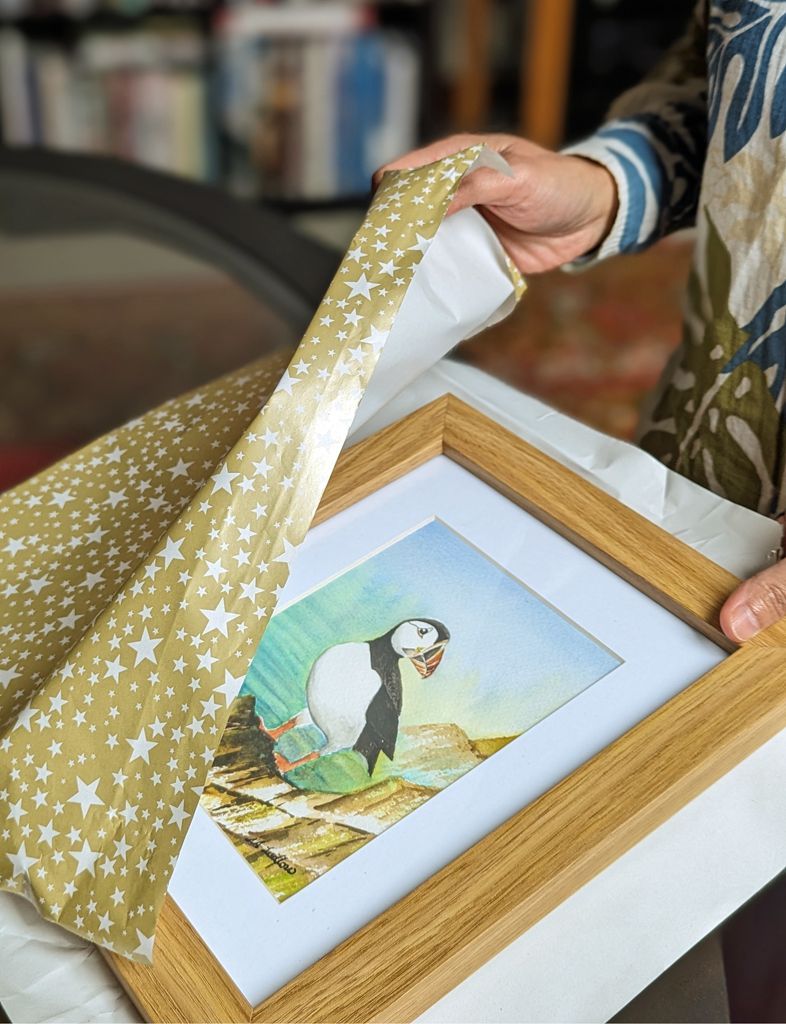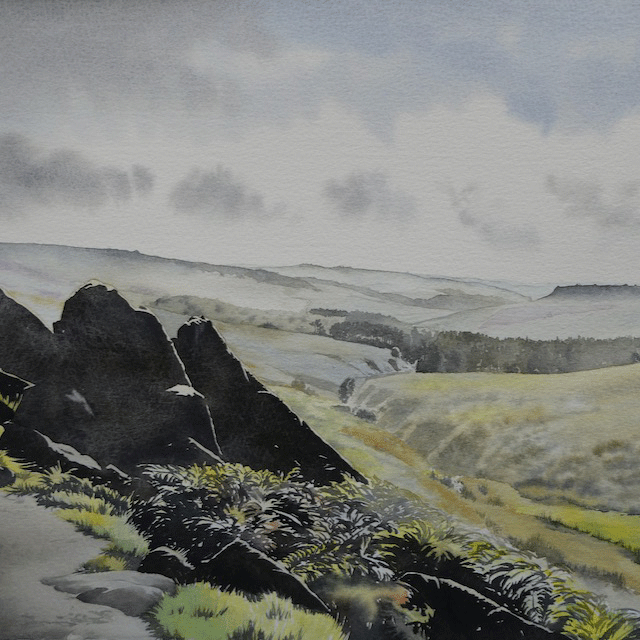ARTicles
Can Iridescent and Metallic Effect Pigments add a little Sparkle to Watercolour Painting?
Breaking with traditional watercolour can create amazing and colourful work.

As I have mentioned before, there is a lot to be said about taking a break from doing things the way we feel comfortable with and trying something that’s just a little bit different. By challenging the norm and getting outside of our comfort zone, we can once again discover a new part of ourselves and in the process create some amazing work. So literally, let’s look at adding a little “sparkle” to our watercolours.
If you are a serious watercolourist like me, you will be thinking like I use to, that “sparkly and metallic effect pigments have no place in watercolour painting as they are for use by children and crafters to decorate cards etc.” Well before you stop reading, let me explain the four reasons why I have changed my mind.
The first reason was simply a change in the way I saw watercolour painting. I stopped thinking of watercolours as just “watercolours” and started to see the medium as a creative art form and with that came the realisation that traditional techniques could be stretched, adapted and modified to shape the artist’s vision. I still consider myself a serious watercolourist, because I care about the quality of the materials I use and the care in which I practice my art, but I also feel that I have thrown off the chains of convention and are more open minded as to what constitutes a good watercolour painting.
Putting aside the craft aspects, my second reason deals with the issue that these types of pigments are rarely used outside children’s art because the subsequent watercolours have consistency issues. Difficult to supply as a moist watercolour (in tubes) as the pigment readily separates, they are often supplied as discs or in pans, often with low tinctorial strengths. These problems are easily overcome by preparing the watercolour yourself, thus ensuring the colour is as strong as needed.
Reason number three is one of permanence, which is no longer an issue, as all of the pigments I use have been made for the automotive market, where light fastness is a top priority.
My four reason is based around the question “why don’t serious watercolourists want to use this type of pigment in their work?” I think the answer is because of tradition, as these pigments, which I call “effects pigments”, are very muted on white watercolour paper and so work best on dark backgrounds.
In the rest of this ARTicle, I want to introduce my range of Effects Pigments, show how easy it is to make your own watercolour and then show you two of Meiru’s watercolour paintings and explain how she painted them.
So, what are “effects pigments”?
I decided to call the A J Ludlow Colours range of iridescent and faux-metallic pigments, Effects Pigment Powders. I supply them as powders so that they can be mixed with my Watercolour Binder and Painting Medium to create a home-made watercolour. The ratio of pigment to binder can be varied giving the user complete freedom over the watercolours’ tinctorial strength.
The iridescent pigment powders are known as interference pigments, in that they change colour depending on the viewing angle. The five particular pigments in the Effects Pigment Powder range are special as they offer colour graduations that flow in and out of each other in a multitude of shades depending on the viewing angle and the incidence of light. These colour changes (also called colour “flop”) are quite dramatic over a dark background; Iridescent (1) goes from light green to turquoise, Iridescent (2) goes from green to violet, Iridescent (3) goes from light blue to pink, Iridescent (4) goes from blue to silver and Iridescent (5) goes from green to copper.
There are two twinkle effect pigments; one is the Shimmer powder, which is a classic sparkle pigment, with large flakes which reflect the incidence of light to give a silver lustre and bright twinkle effect, while the other is Rainbow Jewel powder, which is a special glitter effect pigment based on a relatively large multilayer holographic particle, that reflects the incidence of light to give a bright multicoloured twinkle effect.
White Metallic, Copper Metallic, Lemon Gold, Red Gold and Shimmer Gold are all classic metallic-effect mica pigments. Different metallic colours can be created with the White Metallic powder, for example silver and gun metal, by the addition of a small amount of black watercolour.
Making an Effects Pigment Powder Watercolour
It is very easy to make a watercolour as the following instructions demonstrate:

Figure 1 and 2: The equipment and materials needed (1) and placing the pigment onto the tile carefully to avoid dust (2).
You will need:
• A J Ludlow’s iridescent, shimmer or metallic powder;
• A J Ludlow’s Watercolour Binder and Painting Medium;
• Mixing surface (in this case a white ceramic tile);
• Spatula (I am using my J Adams tapered palette knife, that I have had for over 15 years).
Stage 1:
In order to reduce dust, spray a small area of the tile with a fine mist of water first, then add the powder carefully to this area. Try to keep the powder in a tight heap, this will make it easier to judge how much binder you will need. The great advantage to making your own watercolour is you can make it as intense as you like.

Figure 3 and 4: Binder is drizzled over the pigment (3) and then using the spatula, gently mix the pigment in (4).
Stage 2:
The watercolour can be as strongly pigmented as you desire, but until you have your own ratio, start by adding twice the approximate volume of watercolour binder medium to the amount of powder already on the tile. More powder can always be added later, if a more intensely coloured watercolour is needed, but if too much powder is added then the pigment will be under-bound and so when the watercolour is dry, the pigment may rub off the paper.
Stage 3:
Gently mix the dry powder into the binder, by rolling the liquid over the pigment, taking care not to generate dust. Once the powder has been fully wetted out, continue to mix until the paste is even and smooth. Try to keep the mixing to a confined area.

Figure 5 and 6: Check the mixture’s consistency (5) and painting out the home-made watercolour (6).
Stage 4:
The consistency will depend on the ratio of powder to binder you use, but it should be even. The watercolour in the photographs has a ratio of 2 binder to 1 powder and its consistency is such that it runs off the spatula evenly, without any lumps (see figure 5).
Stage 5:
Once made, the watercolour can be used like any other. Add water and paint with a brush. If desired, the watercolour could be applied using a palette knife (without the addition of water), using an impasto style to give highly strong colour, with slight texture.
If more texture is desired, then the effects powders can be mixed directly into A J Ludlow’s Impasto medium, which is great for sgraffito techniques.
Now be creative….
Below are two pieces of work created by Meiru. As you can imagine, the photographs cannot do the work justice as the pigments change colour with shifts in the light’s angle of incidence. The colours in the photographs therefore appear static, when in reality they are quite dynamic.
Painting 1 – “Incandescent Bluebells” by Meiru Ludlow

Figure 7: The watercolour painting “Incandescent Bluebells” by Meiru Ludlow, viewed directly and at an angle.
The painting, “Incandescent Bluebells” was painted using various home-made watercolours prepared singerly from the Iridescent effects pigment powders. The colours were painted by brush onto 300gsm “Black Black” paper from Fabriano. In figure 7, the colour difference of each iridescent pigment can be seen between the two images. Meiru has also used splashes of conventional watercolour in the foliage and she tells me that in some of her paintings she mixes the iridescent watercolours with conventional watercolours to create interesting hues. She also tells me that these home-made watercolours work exceptionally well with dip pens, which is what she used to sign her name.
Painting 2 – “Lustrous Poppies” by Meiru Ludlow

Figure 8: The watercolour painting “Lustrous Poppies” by Meiru Ludlow, viewed in daylight and under an artificial spotlight.
In “Lustrous Poppies” Meiru has used conventional watercolours and a home-made watercolour using the Lemon Gold metallic-effect powder. She has also created a 3D effect using my Impasto Watercolour Medium, as can be seen more clearly in figure 9. The work has been created on 300gsm “Black Black” paper from Fabriano using a mixture of sgraffito and palette knife painting. Watercolour has been painted on top of the dry impasto medium in some areas and in others, mixed into the impasto gel first before applying by palette knife. The photograph in figure 8 taken under an artificial spotlight, shows the highlights clearly, where the gold effect watercolour has been applied. This photograph also shows that the impasto gel has given the painting a sheen, that can easily be seen in figure 9.
